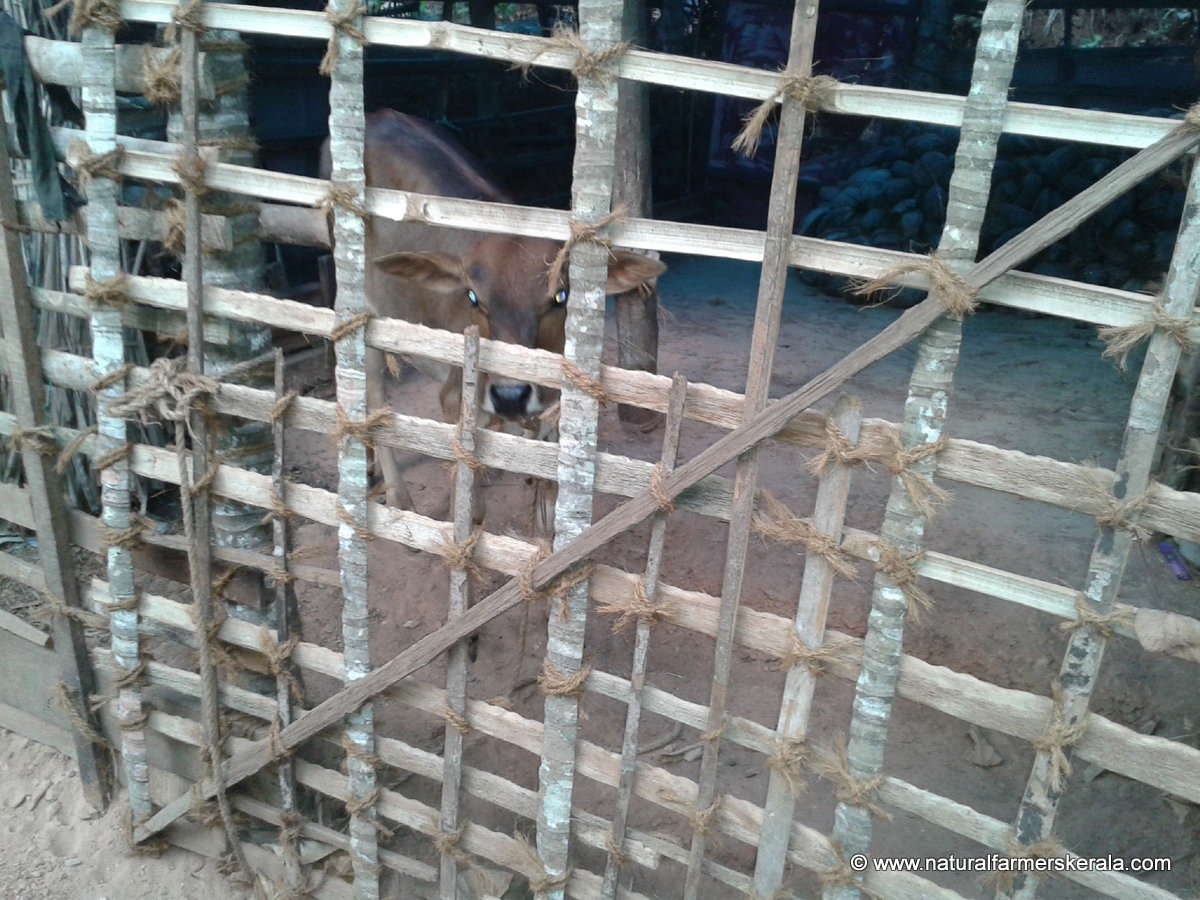How to build a Cow Shed with Natural Materials

How to build a Cow Shed with Natural Materials
Building a small structure is not a difficult task if you are from rural area or if you have some trees, mud and some natural materials around.
It is ideal that cows don’t sleep on cement flooring. Chances are very high they will develop issues with their legs. Most of the cows nowadays sleep on rubber mats.
Identify the soil and amend it properly if the soil doesn’t stay intact. If not sure you can check for tips from one of my friend’s natural building blog www.thannal.com
How to build a strong floor that will withstand cows Hooves.
- Make sure the floor is at least half a meter raised above the ground.
- The front area needs to be slightly raised and sloping by an inch in height towards rear. Cows urinate frequently. It is important that the floor is neither soggy nor slippery.
- Now make 1.5 feet deep pits on all four corners of the floor and two in the center length wise. The circumference of the pit will depend on the girth of the logs being used as pillars.
- Now once you raise the floor, mix some tree sap (Kulamavu or kulirmavu is used mostly in Kerala) and make sure to hammer it down really hard with a wide faced hammer. Floor needs to harden well.
- Create small cavities near the wall on all the three areas of the cow except for the face or feeding area. So the urine passes away easily.
- You can split bamboo or arecanut tree for constructing the walls. Coir rope is also ideal for tying which will last for more than a year. If the rope weakens or deteriorates with time you may tie more over it. Raise the walls to at least 4 feet high in order to keep dogs, foxes and other small feral animals and pests away. Tie in diamond pattern like an x shape to keep the rope and structure in place. Lesser the gap between the walls the safer the cows.
- Center poles will help you to make sloped ceiling and also make a small door for the entrance area.
- Raise a wall at the face of the shed and leave the rear area for entrance.
- Making a door is simple as shown in the below pictures. Use the same x pattern and use arecanut or bamboo. Light weight yet very robust and sturdy. Make loose but removable knots on one side of the door which is to the rear side pole, so the door moves in front and back direction, keep a coconut shell down on the pole so it is easy to move the door. Once the cows are inside move the door towards the center pole and tied it with the rope.
- Try to get a center pole which has a v shape. This is very essential since it will determine the strength of the roof. Now you need another pole at the center of the roof. If you are not confident then nail the poles with steel nails and tie with coir x pattern. You can also use steel cable of low gauge.
- Two more poles on the front and rear are required to hold the roof. Again use nails to give strength and then keep trying coir rope in x patterns.
- Keep few wooden rafters if available which will give strength to the structure. Bamboo rafters are good and light in weight. Then use coconut leaves to weave a thatched roof. I will post on weaving a coconut leaf later.
- Plastic sheets are cheap and durable compared to coconut leaves, if you don’t have the time. However it will be unbearable for the cow during the day time because of the trapped heat and humidity. Workaround is to add few coconuts leaf under and over the plastic sheets. Tied two tips of the coconut leaf making it into like bird wings. Then place it on the roof and push it to the other end with a long pole and keep doing it till the time the plastic is hidden.
6 Replies to “How to build a Cow Shed with Natural Materials”
Comments are closed.













Great Info. Thank you for sharing it online.
I am sure it is a inspiration for many young people like me to build mud houses for cattle and even for humans to live in.
Mud and all the natural materials seems the best alternate for non sustainable destruction that humans are creating.
Great info. Thank you for taking the time to share the information.
Our cows are in Palakkad where we receive heavy rainfall. We have about 80 desi cows and bulls. i was looking for a natural flooring for the cows. Now the problem is that in these areas where we get 5 months continuous rains how can a plain mud floor be good for cows?.
1. continuous rains means the floor will never be dry (i agree to have a roof which becomes all the more difficult for the floor to dry as it’s not exposed to sun
2. when there is a large herd it becomes difficult for the urine to dry.
3. What would be a solution for this as cows don’t like to sit in wet places? ?
Many suggested granite. is it not too hard for the cow’s hooves?
Some suggested cement flooring again which i dont approve of.
Really prerplexed
Yes agreed n understand, you can use bricks for flooring, place it width wise vertical and sloop simiterical towards rear of cow standing
Was waiting for this particular post for long time